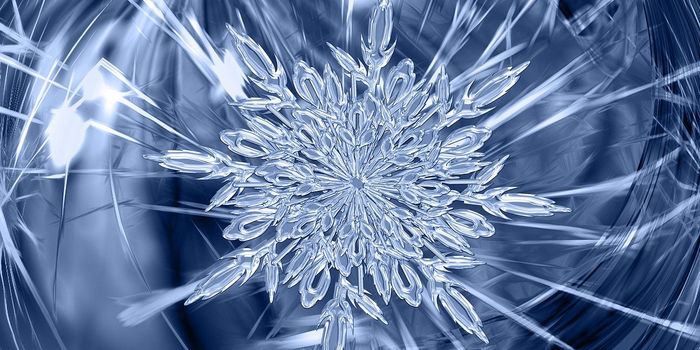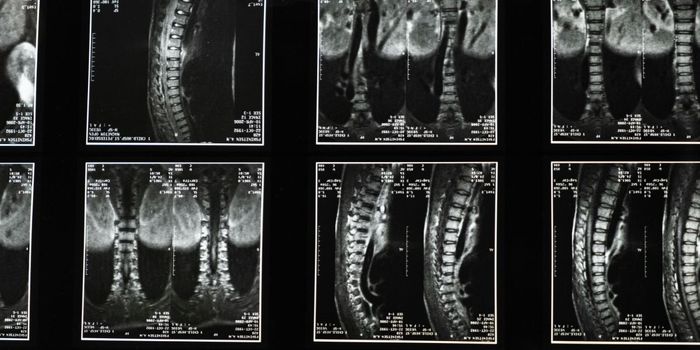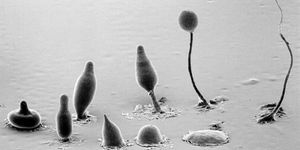Macrophages exist in every type of body tissue, in the lungs as alveolar macrophages and in the liver as Kupffer cells. With an incredible ability to specialize in function and a large self-maintenance capacity, it is easy to see how genetic or autoimmune predispositions to macrophage error could quickly result in a terrible, debilitating state of disease.
Macrophages engulf and destroy dead and dying cells as well as any pathogens that cross their path. These immune cells differentiate from monocytes early in their life and receive tissue-specific signals depending on the influence of their embryonic precursor. Some monocytes remain forever-young, circulating the blood waiting for an emergency call where they might be needed as back-up. Circulating monocytes do respond to recruiting signals when a tissue is under an uncontrollable amount of duress, but their differentiation into tissue-specific macrophages in response to the call only exists as ephemeral reinforcement.
Macrophages were discovered for the first time in 1882, and scientists are only now fully understanding the relationship between adult circulating monocytes and their tissue-specific relatives. In a series of studies published in both
Immunity and
Nature Communications, scientists from the Flanders Interuniversity Institute for Biotechnology and UGent showed using mouse models how adult circulating monocytes could exist alongside tissue-specific macrophages as equals if exposed to the right signals.
While the scientists involved in this study are still unsure about the nature of the signals required for monocytes to differentiate into permanent tissue-specific macrophages, they are hopeful that their discoveries could soon be used as monocyte-based treatments for diseases like pulmonary alveolar proteinosis (PAP), a rare blood disease characterized by malfunctioning of macrophages in the lungs.
PAP exists in three forms: congenital, secondary, and acquired, also known as idiopathic or primary. While different forms of the disease are characterized by different causative agents, the disease ultimately remains the same. Phospholipids and protein build up in the alveoli causing severe breathing problems and lung failure.
A large majority of PAP cases are acquired, a form of the disease caused by an autoimmune response where antibodies target a blood protein called granulocyte-macrophage colony stimulating factor for destruction. Instead of employing immunosuppressant drugs to halt the autoimmune response, monocyte-based therapy could be incorporated to refuel the lung’s population of macrophages.
Using mouse models, scientists involved in the present studies depleted the population of embryonic-derived Kupffer cells in the liver. Miraculously, blood monocytes rushed in to take the place of these macrophages, differentiating and appearing identical to the original macrophage population within two weeks.
Similarly, researchers saw both adult circulating monocytes and embryonic precursors differentiate into identical, tissue-specific macrophages when each population was injected into mice lungs lacking alveolar macrophages. The differentiated macrophages remained functional, self-maintained, and preventing disease for up to one year.
According to
Nature Reviews Immunology, macrophages are “remarkably plastic and can change their functional phenotype depending on the environmental cues they receive.” Martin Guilliams, PhD, one of the scientists involved in the studies, realized the future ability of researchers to manipulate populations of tissue macrophages to treat diseases like PAP.
“These findings would predict the existence of a restricted number of macrophage niches per tissue,” he said.
Whether it’s curing PAP or another macrophage-associated disease, the future of monocyte-based therapy is extremely promising, especially since circulating monocytes are easily accessible from blood donations, while embryonic precursors to tissue-specific macrophages are not.
Source:
Flanders Interuniversity Institute for Biotechnology,
Pulmonary Alveolar Proteinosis Foundation,
Nature Reviews Immunology, publications in
Immunity, Nature Communications, and another in
Immunity









